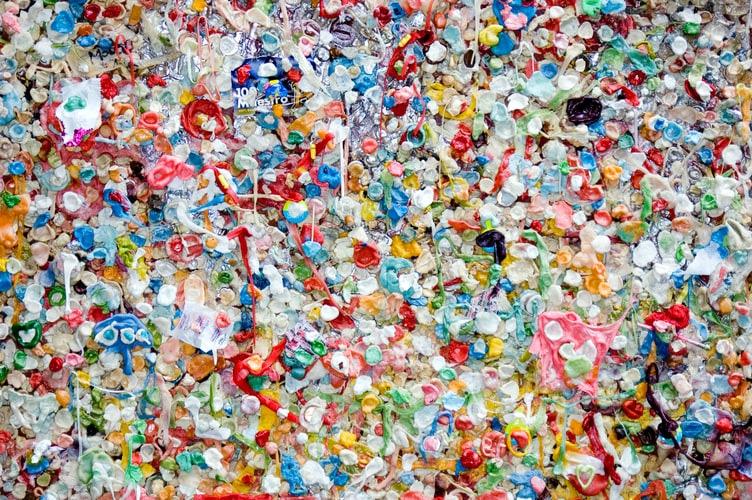
4 minute read
The Health effects of the Plastic Era
In the next days, because the participants wanted to know more about the places to do SEP. We contact the people in charge of the laboratories, hospitals, and universities. We had 2 days where we talked about the places that we offer in our SEP, Research in Universities, Hospital Pharmacy, and Community Pharmacy. And on the last day, we invited the team SEP from IPSF and some SEOs around the world to talk about the SEP to our students.
Moreover, for our social time, we made a virtual party, which was very awesome. We did it by Facebook and the students around the world could interact with us in the comments and also sending some audios to our Dj Diego Alonso to put them on live. We made some dynamics, some questions like: How are you studying in this pandemic? Many students sent their audios and sent some public greetings. The thematic that we made with the Dj was like being in a drug store and our association ' s logo. It was an incredible experience to share with all students.
Advertisement
Finally, we want to motivate all the SEOs to do a Virtual SEP too. Despite this pandemic, there are many ways to promote our SEP and to stay tuned with the students who are interesting in taking SEP with your country. We are grateful to all the students and all the people who help us in our Virtual SEP, we will do another soon.
F e b . d e 2 0 2 0 | V o l . 8
Every day we are surrounded by products made of plastic: beverage bottles, plastic bags, toothbrushes, cosmetics, fabrics, food packaging. And the worst: we have insufficient information about how these plastics can interact with the human organism.
Microplastics (MP’ s) are plastic particles decomposed to sizes of about 5 mm or even less. Due to their small size, they can easily interact with different organisms and disperse in air and water. The MPs most commonly found are polyethylene terephthalate (PET), followed by polyethylene (PE), polystyrene (PS), and polypropylene (PP), and are usually in the form of a fiber or fragment.
One of the biggest concerns related to this subject is the capacity that persistent organic pollutants (POP' s), such as organochlorines, bisphenol A and toxic metals, have to adsorb on the surface of these microplastics since it is known that these components are capable of generating changes in hormonal and neurological levels. Until now, just a few in vitro and in vivo studies have been carried out to verify interactions of MP' s with human physiological and biochemical functions.
Knowing about the most common routes of contamination, such as food, the Rapid Alert System for Food and Feed (RASFF) and the European Food Safety Authority (EFSA) have already started to present notifications of the presence of MP’ s in food products. Among them, but not only, are foods such as honey, milk, beer, meats stored in trays, teas, salt (from various regions of the world), and seafood, the most contaminated 1,2,3,4,5,6 . There is also a World Health Organization ’ s (WHO) report on “Microplastic in drinking water ” that indicatesthat there is necessary more research about the topic 7 .
As it is an issue with growing debate, the results are finally being achieved: Italian researchers first detected the presence of microplastics in 4 of the 6 analyzed placentas, totaling 12 microplastics. They also theorized the entry of this substance into the human body through food and breathing, with the action of M cells, paracellular diffusion, macrophages, and ciliated epithelium, being carried into the blood by dendritic cells 8.
F e b . d e 2 0 2 0 | V o l . 8
Previous research, carried out by Schwabl and collaborators, analyzed the presence of microplastics as a result of digestion, finding all samples (n = 8) containing about 20 microplastics in 10g of feces, such as polypropylene (PP) and polyethylene terephthalate (PET ) 9.
The consequences of chronic and acute MP’ s exposure in the mammalian system are still very unclear. And there is more: these MP’ s can be decomposed into nano sizes (nanoplastics), potentially entering the circulation system and interacting with albumin and other blood proteins, probably modifying drug distribution.
After all this information you might be wondering: what can we, as pharmacists and future pharmacists, do about it? One of the best ways to act quickly is to encourage the correct disposal of medicines and packaging at collection points and even the usage of bioplastics is an alternative. But more: we can explore this field as researchers, clarifying potential interactions that these MP’ s and NP’ s have with physiological parameters and medications.
References
[1]. Liebezeit, G., & Liebezeit, E. Non-pollen particulates in honey and sugar. Food Addit Contam Part A, 2013, 30(12), 2136–2140. doi:10.1080/19440049.2013.843025
[2]. Lusher, A. L., McHugh, M., & Thompson, R. C. Occurrence of microplastics in the gastrointestinal tract of pelagic and demersal fish from the English Channel. Mar Pollut Bull. 2013, 67(1-2), 94–99.
[3]. Lachenmeier, D.W., Kocareva, J., Noack, D., Kuballa, T. Microplastic identification in German beer-an artefact of laboratory contamination? Deutsche Lebensmittel-Rundschau. 2015, 111 (10), pp. 437-440.
[4]. Hernandez, L.M., Xu, E.G., Larsson, H.C.E., Tahara, R., Maisuria, V.B., Tufenkji, N. Plastic teabags release billions of microparticles and nanoparticles into tea. Environ. Sci. Technol. 2019, 53(21), 12300-12310.











